Image gallery
-
John Corlett, founder and editor of The Sporting Times of London


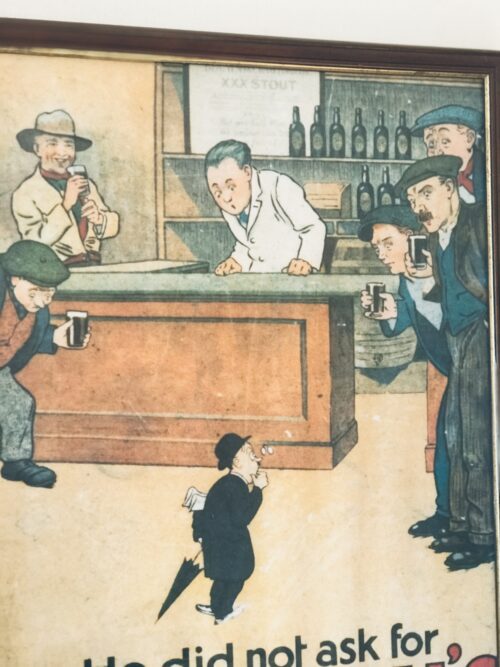
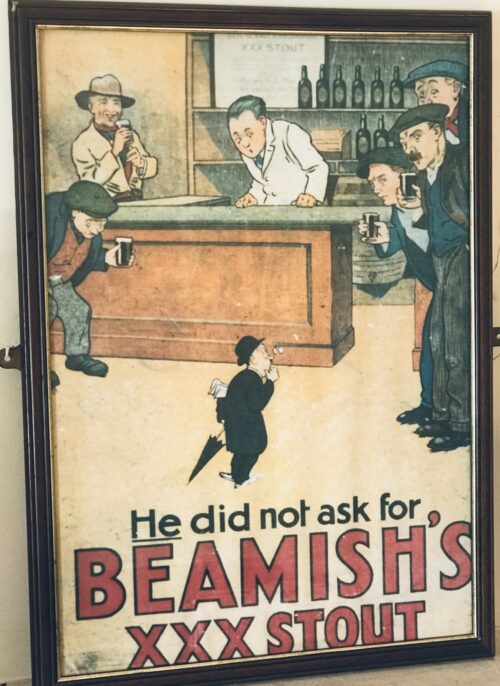













 Source: Photojoiner
EARLIER THIS YEAR, the controversial Cuban revolutionary Che Guevara appeared on an Irish stamp to commemorate 100 years since his birth.
As well as unearthing the debate around the divisive legacy of the Argentine who was pivotal in the struggle to overthrow Cuba’s dictatorship, it also brought to the fore a discussion of Guevara’s Irish links.
Che’s father, who’s full name is Ernesto Guevara Lynch, was proud of his Irish roots and the story of how his family built a business in Argentina after fleeing Ireland during Cromwell’s era.
Years later when Che was Cuba’s transport minister, he made an unscheduled stop off in Limerick, and wrote a letter to his father, who he thought would be pleased to hear that he was visiting a country of his ancestry, says Nathan Mannion, curator at Epic, the Irish emigration museum.
There’s another, non-familial link that Guevara has with the island of Ireland – the famous, ubiquitous two-tone print of Che was created by an Irish artist Jim Fitzpatrick, which was created using a photo by Cuban photographer Guerrillero Heroico.
Source: Photojoiner
EARLIER THIS YEAR, the controversial Cuban revolutionary Che Guevara appeared on an Irish stamp to commemorate 100 years since his birth.
As well as unearthing the debate around the divisive legacy of the Argentine who was pivotal in the struggle to overthrow Cuba’s dictatorship, it also brought to the fore a discussion of Guevara’s Irish links.
Che’s father, who’s full name is Ernesto Guevara Lynch, was proud of his Irish roots and the story of how his family built a business in Argentina after fleeing Ireland during Cromwell’s era.
Years later when Che was Cuba’s transport minister, he made an unscheduled stop off in Limerick, and wrote a letter to his father, who he thought would be pleased to hear that he was visiting a country of his ancestry, says Nathan Mannion, curator at Epic, the Irish emigration museum.
There’s another, non-familial link that Guevara has with the island of Ireland – the famous, ubiquitous two-tone print of Che was created by an Irish artist Jim Fitzpatrick, which was created using a photo by Cuban photographer Guerrillero Heroico.
 Source: Epic
After the stamp controversy earlier this year, Fitzpatrick told TheJournal.ie that he was used to the controversy around Guevara, dismissing the criticism and accusations levelled against him as “black propaganda”.
He added that he was “immensely proud” to have his artwork of the Irish-descendant revolutionary on an official Irish stamp.
Irish roots
Patrick Lynch was born and raised in 1715 to parents from two of the main tribes of Galway. But after defeats at the hands of Cromwell’s forces, and later those of William of Orange, he fled to Bilbao in the Basque region of northern Spain, and then to Rio de la Plata, which would later become Argentina.
“He became a prominent figure in the Spanish government, a leading civil servant,” Nathan told TheJournal.ie.
After travelling to Buenos Aires in 1749 to work as a captain in the Milicias, he married a wealthy heiress. The valuable lands he gathered over the years were then passed on to his son, who followed into his father’s line of business.
In the century that followed, one of Patrick Lynch’s descendants would set up a shipping company, fight in the Argentine army and Chilean navy, write novels and short stories, paint and found a movement for rural libraries in Argentina.
It’s hard not to see how that family history didn’t impact on young Che, who was athletic and political, as well as passionate about poetry.
But it was while Che Guevara toured South America during his 20s that the spark of political activism was lit – it was during this time that he also penned a book of his own – The Motorcycle Diaries, (which decades later was turned into a film of the same name).
Source: Epic
After the stamp controversy earlier this year, Fitzpatrick told TheJournal.ie that he was used to the controversy around Guevara, dismissing the criticism and accusations levelled against him as “black propaganda”.
He added that he was “immensely proud” to have his artwork of the Irish-descendant revolutionary on an official Irish stamp.
Irish roots
Patrick Lynch was born and raised in 1715 to parents from two of the main tribes of Galway. But after defeats at the hands of Cromwell’s forces, and later those of William of Orange, he fled to Bilbao in the Basque region of northern Spain, and then to Rio de la Plata, which would later become Argentina.
“He became a prominent figure in the Spanish government, a leading civil servant,” Nathan told TheJournal.ie.
After travelling to Buenos Aires in 1749 to work as a captain in the Milicias, he married a wealthy heiress. The valuable lands he gathered over the years were then passed on to his son, who followed into his father’s line of business.
In the century that followed, one of Patrick Lynch’s descendants would set up a shipping company, fight in the Argentine army and Chilean navy, write novels and short stories, paint and found a movement for rural libraries in Argentina.
It’s hard not to see how that family history didn’t impact on young Che, who was athletic and political, as well as passionate about poetry.
But it was while Che Guevara toured South America during his 20s that the spark of political activism was lit – it was during this time that he also penned a book of his own – The Motorcycle Diaries, (which decades later was turned into a film of the same name).
 Source: Epic
Referring to Che’s “restless” nature, his father declared “the first thing to note is that in my son’s veins flowed the blood of the Irish rebels”.
“Half a million, to a million of the Argentinian population claim to be of Irish descent. But there are problems with identifying people of Irish descent, because when the Irish arrived during that era, they were recorded as ‘British’, so it’s a little bit problematic identifying who was Irish and who wasn’t.
“So the ancestry of Guevara is quite exceptional – as they emigrated to Argentina long before most Irish people did, during the latter half of the 19th century, coming up to the Great Famine.”
Jim Fitzpatrick (born James Fitzpatrick in 1944) is an Irish artist. He is best known for elaborately detailed work inspired by the Irish Celtic artistictradition. However, his most famous single piece is rather different in style, his iconic two-tone portrait of Che Guevara created in 1968, based on a photo by Alberto Korda.
Jim Fitzpatrick was born in December 1944 to James and Elizabeth Fitzpatrick (née O'Connor). His parents had married in the north Dublin suburb of Cabra in June 1943. During a period of childhood sickness, Fitzpatrick read and drew in bed, as well as his mother and great-aunt telling him stories of the Tuatha Dé Danann, Cú Chulainn and Fionn MacCumhaill. He was educated at the Franciscan College Gormanston, County Meath, just north of Dublin. His father was a photo-journalist and he is a grandson of political cartoonist Thomas Fitzpatrick.
Fitzpatrick's earliest work was the graphic portrait of Che Guevara, which was based on the photograph by Alberto Korda, entitled Guerrillero Heroico, was taken on 5 March 1960. Fitzpatrick met Guevara 5 years earlier in Kilkee during Guevara's visit to trace his Irish ancestry. Having initially tried to distribute the poster himself, Fitzpatrick chose to remove copyright from the image so that is could be used freely by left wing groups, stating that "I literally wanted it to breed like rabbits. I wanted it to spread."
In 1978, he wrote and illustrated a book called The Book of Conquests, the retelling of a cycle of Irish myths, the Lebor Gabála Érenn. The book is a retelling of the legends of the coming of the Tuatha dé Dannan to Ireland and their fight with the Fir Bolg. The illustrations include intricate Celtic scroll work and knotwork, for which Fitzpatrick has become known. A second book, The Silver Arm, is based on the deeds of Nuada of the Silver Arm and Lugh in their fight with the Formor.
Fitzpatrick has produced artwork for bands such as Thin Lizzy including their Jailbreak album in 1976, for Sinéad O'Connor's 2000 album Faith and Courage, for The Darkness' 2003 single "Christmas Time (Don't Let the Bells End)",Norwegian black metal band Darkthrone's 2013 album cover The Underground Resistance, and took the photograph for the cover of Louise Patricia Crane's 2020 album Deep Blue.He was commissioned by CityJet in 2007 to create images reflecting Ireland's culture, mythology, history and landscapes.
In 2011, Fitzpatrick announced that he intended to copyright the iconic red and black Che Guevara graphic. He cited "crass commercial" use of the image for his decision and planned to hand over the copyright and all rights, in perpetuity, to the family of Guevara in Cuba. The image remains available for free through Fitzpatrick's website for non-commercial usage. An Post released a stamp featuring Fitzpatrick's image of Guevara in 2017 to mark 50 years since its publication.
Source: Epic
Referring to Che’s “restless” nature, his father declared “the first thing to note is that in my son’s veins flowed the blood of the Irish rebels”.
“Half a million, to a million of the Argentinian population claim to be of Irish descent. But there are problems with identifying people of Irish descent, because when the Irish arrived during that era, they were recorded as ‘British’, so it’s a little bit problematic identifying who was Irish and who wasn’t.
“So the ancestry of Guevara is quite exceptional – as they emigrated to Argentina long before most Irish people did, during the latter half of the 19th century, coming up to the Great Famine.”
Jim Fitzpatrick (born James Fitzpatrick in 1944) is an Irish artist. He is best known for elaborately detailed work inspired by the Irish Celtic artistictradition. However, his most famous single piece is rather different in style, his iconic two-tone portrait of Che Guevara created in 1968, based on a photo by Alberto Korda.
Jim Fitzpatrick was born in December 1944 to James and Elizabeth Fitzpatrick (née O'Connor). His parents had married in the north Dublin suburb of Cabra in June 1943. During a period of childhood sickness, Fitzpatrick read and drew in bed, as well as his mother and great-aunt telling him stories of the Tuatha Dé Danann, Cú Chulainn and Fionn MacCumhaill. He was educated at the Franciscan College Gormanston, County Meath, just north of Dublin. His father was a photo-journalist and he is a grandson of political cartoonist Thomas Fitzpatrick.
Fitzpatrick's earliest work was the graphic portrait of Che Guevara, which was based on the photograph by Alberto Korda, entitled Guerrillero Heroico, was taken on 5 March 1960. Fitzpatrick met Guevara 5 years earlier in Kilkee during Guevara's visit to trace his Irish ancestry. Having initially tried to distribute the poster himself, Fitzpatrick chose to remove copyright from the image so that is could be used freely by left wing groups, stating that "I literally wanted it to breed like rabbits. I wanted it to spread."
In 1978, he wrote and illustrated a book called The Book of Conquests, the retelling of a cycle of Irish myths, the Lebor Gabála Érenn. The book is a retelling of the legends of the coming of the Tuatha dé Dannan to Ireland and their fight with the Fir Bolg. The illustrations include intricate Celtic scroll work and knotwork, for which Fitzpatrick has become known. A second book, The Silver Arm, is based on the deeds of Nuada of the Silver Arm and Lugh in their fight with the Formor.
Fitzpatrick has produced artwork for bands such as Thin Lizzy including their Jailbreak album in 1976, for Sinéad O'Connor's 2000 album Faith and Courage, for The Darkness' 2003 single "Christmas Time (Don't Let the Bells End)",Norwegian black metal band Darkthrone's 2013 album cover The Underground Resistance, and took the photograph for the cover of Louise Patricia Crane's 2020 album Deep Blue.He was commissioned by CityJet in 2007 to create images reflecting Ireland's culture, mythology, history and landscapes.
In 2011, Fitzpatrick announced that he intended to copyright the iconic red and black Che Guevara graphic. He cited "crass commercial" use of the image for his decision and planned to hand over the copyright and all rights, in perpetuity, to the family of Guevara in Cuba. The image remains available for free through Fitzpatrick's website for non-commercial usage. An Post released a stamp featuring Fitzpatrick's image of Guevara in 2017 to mark 50 years since its publication.


This morning a party of one N.C.O. and six men of the Duke of Wellington's Regiment were fired on by a body of civilians outside a bakery in Church Street, Dublin. One soldier was killed and four were wounded. A piquet of the Lancashire Fusiliers in the vicinity, hearing the shots, hurried to their comrades' assistance, and succeeded in arresting one of the aggressors. No arms or equipment were lost by the soldiers.Much was made of Barry's age by Irish newspapers, but the British military pointed out that the three soldiers who had been killed were "much the same age as Barry". On 20 October, Major Reginald Ingram Marians OBE, Head of the Press Section of the General Staff, informed Basil Clarke, Head of Publicity, that Washington was "only 19 and that the other soldiers were of similar ages." General Macready was well aware of the "propaganda value of the soldier's ages." Macready informed General Sir Henry Wilson on the day that sentence was pronounced "of the three men who were killed by him (Barry) and his friends two were 19 and one 20 — official age so probably they were younger... so if you want propaganda there you are."It was later confirmed that Private Harold Washington was 15 years and 351 days old, having been born 4 October 1904. About this competing propaganda, Martin Doherty wrote in a magazine article entitled 'Kevin Barry & the Anglo-Irish Propaganda War':
from the British point of view, therefore, the Anglo-Irish propaganda war was probably unwinable [sic]. Nationalist Ireland had decided that men like Kevin Barry fought to free their country, while British soldiers — young or not — sought to withhold that freedom. In these circumstances, to label Barry a murderer was merely to add insult to injury. The contrasting failure of British propaganda is graphically demonstrated by the simple fact that even in British newspapers Privates Whitehead, Washington and Humphries remained faceless names and numbers, for whom no songs were written.”

He tried to persuade me to give the names, and I persisted in refusing. He then sent the sergeant out of the room for a bayonet. When it was brought in the sergeant was ordered by the same officer to point the bayonet at my stomach ... The sergeant then said that he would run the bayonet into me if I did not tell ... The same officer then said to me that if I persisted in my attitude he would turn me out to the men in the barrack square, and he supposed I knew what that meant with the men in their present temper. I said nothing. He ordered the sergeants to put me face down on the floor and twist my arm ... When I lay on the floor, one of the sergeants knelt on my back, the other two placed one foot each on my back and left shoulder, and the man who knelt on me twisted my right arm, holding it by the wrist with one hand, while he held my hair with the other to pull back my head. The arm was twisted from the elbow joint. This continued, to the best of my judgment, for five minutes. It was very painful ... I still persisted in refusing to answer these questions... A civilian came in and repeated the questions, with the same result. He informed me that if I gave all the information I knew I could get off.On 28 October, the Irish Bulletin (organised by Dick McKee, the IRA Commandant of the Dublin Brigade), a news-sheet produced by Dáil Éireann's Department of Publicity,published Barry's statement alleging torture. The headline read: English Military Government Torture a Prisoner of War and are about to Hang him. The Irish Bulletin declared Barry to be a prisoner of war, suggesting a conflict of principles was at the heart of the conflict. The English did not recognise a war and treated all killings by the IRA as murder. Irish republicans claimed that they were at war and it was being fought between two opposing nations and therefore demanded prisoner of war status. Historian John Ainsworth, author of Kevin Barry, the Incident at Monk's bakery and the Making of an Irish Republican Legend, pointed out that Barry had been captured by the British not as a uniformed soldier but disguised as a civilian and in possession of flat-nosed "Dum-dum" bullets, which expand upon impact, maximising the amount of damage done to the "unfortunate individual" targeted, in contravention of the Hague Convention of 1899. Erskine Childers addressed the question of political status in a letter to the press on 29 October, which was published the day after Barry's execution.
Under similar circumstances a body of Irish Volunteers captured on June 1 of the present year a party of 25 English military who were on duty at the King's Inns, Dublin. Having disarmed the party the Volunteers immediately released their prisoners. This was in strict accordance with the conduct of the Volunteers in all such encounters. Hundreds of members of the armed forces have been from time to time captured by the Volunteers and in no case was any prisoner maltreated even though Volunteers had been killed and wounded in the fighting, as in the case of Cloyne, Co. Cork, when, after a conflict in which one Volunteer was killed and two wounded, the whole of the opposing forces were captured, disarmed, and set at liberty.
He is meeting death as he met life with courage but with nothing of the braggart. He does not believe that he is doing anything wonderfully heroic. Again and again he has begged that no fuss be made about him.He reported Barry as saying "It is nothing, to give one's life for Ireland. I'm not the first and maybe I won't be the last. What's my life compared with the cause?" Barry joked about his death with his sister Kathy. "Well, they are not going to let me like a soldier fall… But I must say they are going to hang me like a gentleman." This was, according to Cronin, a reference to George Bernard Shaw's The Devil's Disciple, the last play Kevin and his sister had seen together. On 31 October, he was allowed three visits of three people each, the last of which was taken by his mother, brother and sisters. In addition to the two Auxiliaries with him, there were five or six warders in the boardroom. As his family were leaving, they met Canon John Waters, on the way in, who said, "This boy does not seem to realise he is going to die in the morning." Mrs Barry asked him what he meant. He said: "He is so gay and light-hearted all the time. If he fully realised it, he would be overwhelmed." Mrs Barry replied, "Canon Waters, I know you are not a Republican. But is it impossible for you to understand that my son is actually proud to die for the Republic?" Canon Waters became somewhat flustered as they parted. The Barry family recorded that they were upset by this encounter because they considered the chief chaplain "the nearest thing to a friend that Kevin would see before his death, and he seemed so alien." Kevin Barry was hanged on 1 November, after hearing two Masses in his cell. Canon Waters, who walked with him to the scaffold, wrote to Barry's mother later, "You are the mother, my dear Mrs Barry, of one of the bravest and best boys I have ever known. His death was one of the most holy, and your dear boy is waiting for you now, beyond the reach of sorrow or trial." Dublin Corporation met on the Monday, and passed a vote of sympathy with the Barry family, and adjourned the meeting as a mark of respect. The Chief Secretary's office in Dublin Castle, on the Monday night, released the following communiqué:
The sentence of death by hanging passed by court-martial upon Kevin Barry, or Berry, medical student, aged 18½ years, for the murder of Private Whitehead in Dublin on September 20, was duly executed this morning at Mountjoy Prison, Dublin. At a military court of inquiry, held subsequently in lieu of an inquest, medical evidence was given to the effect that death was instantaneous. The court found that the sentence had been carried out in accordance with law.Barry's body was buried at 1.30 p.m, in a plot near the women's prison. His comrade and fellow-student Frank Flood was buried alongside him four months later. A plain cross marked their graves and those of Patrick Moran, Thomas Whelan, Thomas Traynor, Patrick Doyle, Thomas Bryan, Bernard Ryan, Edmond Foley and Patrick Maher who were hanged in the same prison before the Anglo-Irish Treaty of July 1921 which ended hostilities between Irish republicans and the British.The men had been buried in unconsecrated ground on the jail property and their graves went unidentified until 1934.They became known as The Forgotten Ten by republicans campaigning for the bodies to be reburied with honour and proper rites.On 14 October 2001, the remains of these ten men were given a state funeral and moved from Mountjoy Prison to be re-interred at Glasnevin Cemetery in Dublin.




Denny Lyne, Paddy Bawn Brosnan, J J Nerney and Eddie Boland in action during the 1946 All Ireland Final between Kerry and Roscommon (The Kerryman)

Soldiers of the 170th New York Infantry, one of the other regiments of Corcoran’s Irish Legion, during the Civil War (Library of Congress)

Andersonville as it appeared on 17th August 1864, a little over a month after Daniel died (Library of Congress)
Sir, I beg to state that I Mary Dowd now living here and aged about 65 am the widow of Daniel Dowd who served as a soldier in the late American war of 1863, and died a Prisoner of War in Richmond Prison Virginia [actually in Andersonville, Georgia]. Said Daniel Dowd served in the Army of the North. After his death, I deposited the necessary documents to prove my title to pension, in the hands of a Mr. Daniel McGillycuddy Solicitor Tralee, with the view to place them before the authorities in Washington , and he on 27th December 1873, forwarded the same to a Mr. Walsh a Claim Agent, for the purpose of lodging same. Since, I have not received a reply to my solicitor’s letters or received any pay nor pension or acknowledgement of claim. I also learn that my husband at his death had in his possession £100, which he left to Father Mc Coiney who prepared him for death, in trust for me, and which sum never reached me. I know no other course better, than apply to you, resting assured that you will cause my just claim to be sifted out, when justice will be measured to a poor Irish widow who is now working hard to maintain a long family. (7)As was common at the time, Mary was illiterate– the letter was written for her by her solicitor McGillycuddy, and she made her mark with an ‘X’. It seems unlikely she ever received any monies as a result of it. Her American-born daughter Biddy grew to adulthood in Ireland. Her home had become Dingle, Co. Kerry rather than Buffalo, New York entirely as a result of her father’s death in a Prisoner of War camp more than 6,000 km from Ireland. Daniel’s fateful Civil War service also meant his daughter married and started a family in Ireland rather than America. Biddy’s husband was a fisherman, Patrick Johnson, and together the couple had seven children. One of them, Ellie, was Paddy Bawn Brosnan’s mother. Biddy died in 1945 and is buried in St. James’s Church in Dingle. Unlike her father’s resting place in Andersonville, it is not marked with a headstone. (8) The American Civil War had a long-lasting, inter-generational impact on tens of thousands of Irish people, both in Ireland and the United States. Had it not been for the Confederate decision to launch an attack at Sangster’s Station in Virginia in 1863, or Daniel’s incarceration in Georgia in 1864, it is unlikely that Paddy Bawn Brosnan would ever have been born. The story of the footballing legend’s family is evidence of the often unrecognised impact of what was the largest conflict in Kerry people’s history. One wonders did Paddy Bawn reflect on his own grandmother’s New York story as he made his own journey across the Atlantic to take part in that historic sporting occasion only two years after her death in 1947.

Another image of Biddy, taken with some of the younger generations of her family. Without the events of the American Civil War, she would likely have never returned to Dingle, and Paddy Bawn Brosnan would never have been born (Mossy Donegan)




|
|
|
||||||||||||||||||||||||||||||||||||||||||||||||||||||||||||||||||||||||||||||||||||
Source: Central Statistics Office. "CNA17: Population by Off Shore Island, Sex and Year". CSO.ie. Retrieved October 12, 2016.
Transport[edit]Prior to 1997 there was no scheduled ferry service and people traveled to and from the islands using local fishing boats. Since then a ferry service operates from Roonagh Quay, Louisburgh, County Mayo.[13] The pier was constructed during the 1980s by the Irish government, around this time the roads on the island were paved.[14] |
||||||||||||||||||||||||||||||||||||||||||||||||||||||||||||||||||||||||||||||||||||||





|
John B. Keane |
|
|---|---|

Statue of John B. Keane in Listowel, County Kerry. |
|
| Born | John Brendan Keane 21 July 1928 Church Street, Listowel, County Kerry, Ireland |
| Died | 30 May 2002 (aged 73) Listowel, County Kerry, Ireland |
| Nationality | Irish |
| Education | St Michael's College, Listowel |
| Notable works | The Field, Sive |
| Notable awards | Honorary Life Member of the Royal Dublin Society |
| Spouse | Mary O'Connor |
| Children | Billy Keane Conor Keane John Keane Joanna Keane |



Ireland manager Jack Charlton and assistant Maurice Setters after the loss to Italy in the quarter-finals of the 1990 World Cup




Ireland manager Jack Charlton and assistant Maurice Setters after the loss to Italy in the quarter-finals of the 1990 World Cup



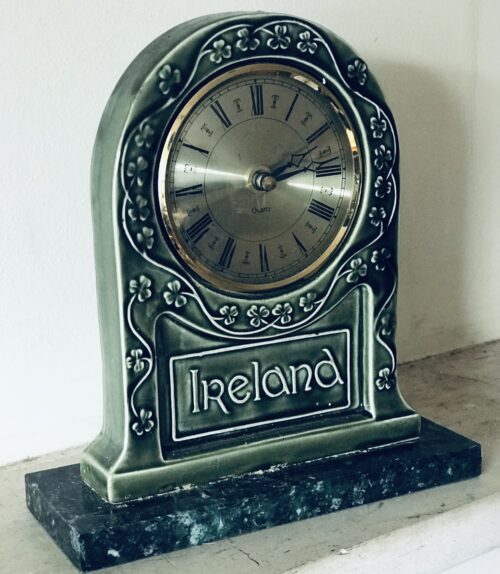
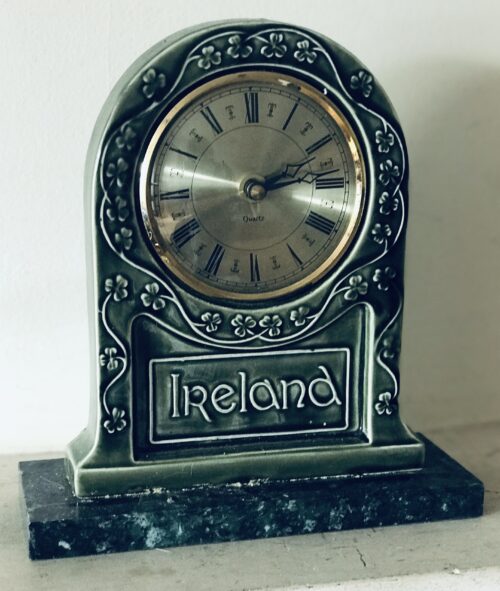
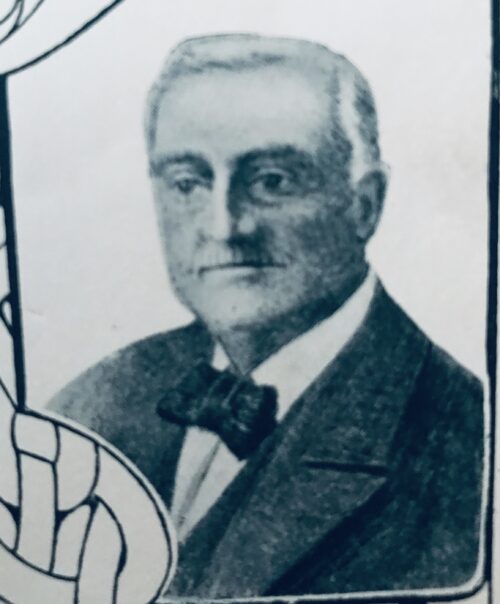
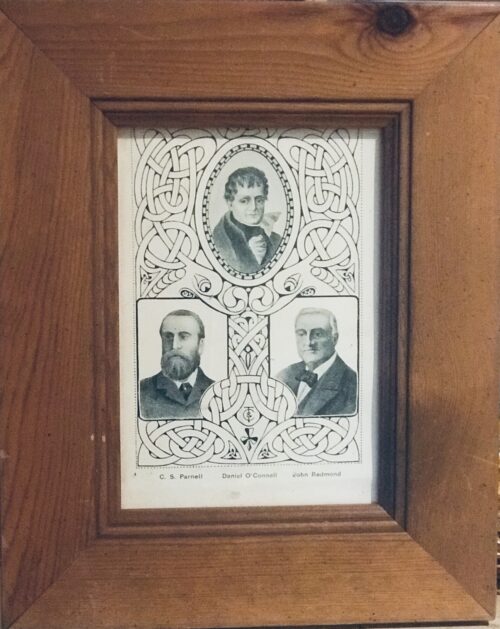











Let no man write my epitaph; for as no man who knows my motives dare now vindicate them, let not prejudice or ignorance, asperse them. Let them and me rest in obscurity and peace, and my tomb remain un-inscribed, and my memory in oblivion, until other times and other men can do justice to my character. When my country takes her place among the nations of the earth, then and not till then, let my epitaph be written. I have done.An earlier and more credible version of the speech was published in 1818, taken from the notes of his counsel Peter Burrowes, in a biography on Sarah Curran's father John, emphasising that Emmet's epitaph should be written on the future vindication of his character, and not specifically when Ireland took its place as a nation. It closed:
I am here ready to die. I am not allowed to vindicate my character; no man shall dare to vindicate my character; and when I am prevented from vindicating myself, let no man dare to calumniate me. Let my character and my motives repose in obscurity and peace, till other times and other men can do them justice. Then shall my character be vindicated; then may my epitaph be written.The modern historian Patrick Geoghehan wrote in 2003: "At last count there are over seventy different versions of the text, but most of these are later reworkings and have little claim to acceptance." Chief Justice Lord Norbury sentenced Emmet to be hanged, drawn and quartered, as was customary for conviction of treason. The following day, 20 September, Emmet was executed in Thomas Street in front of St. Catherine's. He was hanged and then beheaded once dead. As family members and friends of Robert had also been arrested, including some who had nothing to do with the rebellion, no one came forward to claim his remains out of fear of arrest. Robert Emmet is described as slight in person; his features were regular, his forehead high, his eyes bright and full of expression, his nose sharp, thin, and straight, the lower part of his face slightly pock-marked, his complexion sallow.[5]


Wolf Tone was sent to France to claim the support of the Directory, under the express condition that the French should come to Ireland as allies, and should act under direction of the new government, as Rochambeau had done in America. With this view, Tone had frequently conferences at Paris with Hoche; and the Directory finally determined to send from Brest a fleet of forty-five sail, with an army of fifteen thousand men, under the charge of this able general, December 15, 1796. England was saved by a violent tempest.

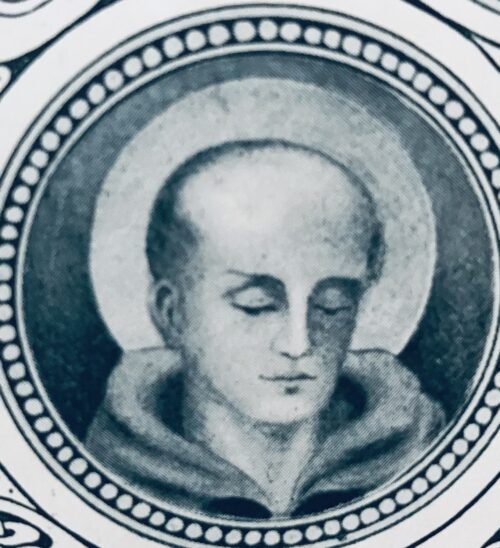
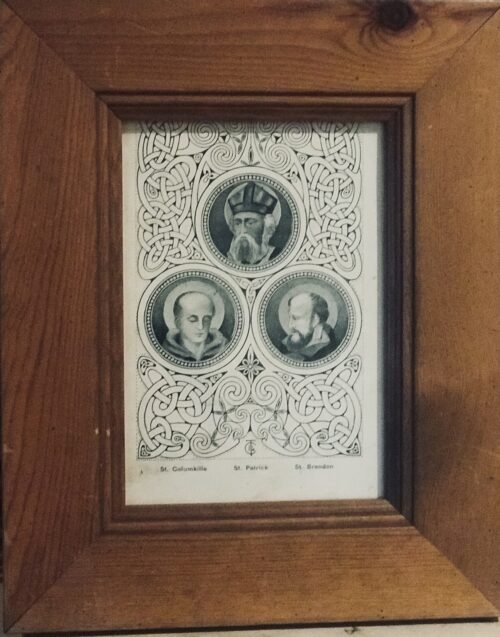
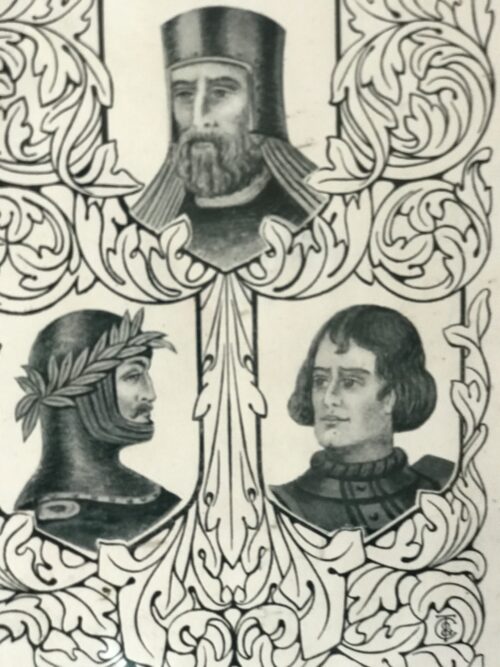

|
Thomas FitzGerald |
|
|---|---|
| The Earl of Kildare | |
 |
|
| Reign | 1534–1537 |
| Predecessor | Gerald FitzGerald |
| Successor | Title forfeited |
| Born | 1513 |
| Died | 3 February 1537 (aged 24) Tyburn, London, Kingdom of England |
| Noble family | FitzGerald dynasty |
| Father | Gerald FitzGerald |
| Mother | Elizabeth Zouche |
| Religion | Roman Catholicism |






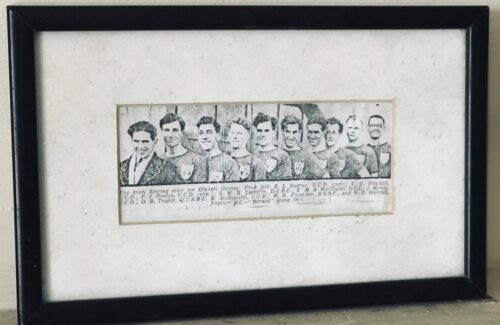

1947-1948
After some lean years, the College aimed at revivification under the author’s captaincy, by intensive training twice daily in 1947, repeating the above wins and making a significant inaugural appearance at the Royal Henley Regatta by beating Reading University and Kings College London in the initial rounds in the Thames Cup before elimination in the semi-final by the eventual winners, Kent School U.S.A. It was easy to predict the outcome of the 1948 season which, captained by Paddy Dooley, repeated the above Irish competitive season, finishing by victory in the final of the Irish Senior Eights Championship over Belfast Commercial Boat Club, at present Belfast Rowing Club, on the river Lagan.
CREW SELECTED
The I.A.R.U. had ruled previously that the winning eight would be nominated as an All- Ireland entry to the Olympic Games and the relevant sub-committee met immediately after the race on the 10th July 1948 and U.C.D. were invited to form the Olympic Crew. Dominant advice was given and accepted fully from Ray Hickey, who rowed in the successful Senior Championship eight in 1940 and coached both 1947 and 1948 crews. Initial practice was on the 12th and the crew was finally selected on the 16th July as follows:-|
Bow |
T.G. Dowdall |
UCD |
|
2
|
E.M.A McElligott |
UCD |
|
3
|
J. Hanly |
UCD |
|
4
|
D.D.B. Taylor |
Queen’s |
|
5
|
B. McDonnell |
UCD |
|
6
|
P.D.R. Harold |
Neptune |
|
7
|
R.W.R Tamplin |
Trinity |
|
Stroke
|
P.O. Dooley |
UCD |
|
Cox
|
D.L. Sugrue |
UCD |
|
Coaches |
R.G. Hickey |
UCD |
|
M. Horan |
Trinity |
|
|
Manager |
D.S.F. O’Leary |
UCD |
|
Substitutes |
H.R. Chantler |
Trinity |
|
W. Stevens |
Neptune |
EIRE/IRELAND-26/32
So far it seemed simple, but now it was the Eire/Ireland question; briefly, “Eire” meant pick your athletes from twenty-six counties, whereas “Ireland”‘ meant thirty-two counties. Dan Taylor, Captain of the Q.U.B.C. was included and the I.A.R.U. was not yet a member of the F.I.S.A. Some seventeen days of training followed on both Liffey and Thames. Long mileage was the hallmark of the college crews in the previous two seasons and included an indelibly remembered row from Islandbridge to Poolbeg Lighthouse on a calm day, it was subsequently learned that the U.S.A. and Norway, gold and bronze medal winners, crewed for two years and nine months respectively.BORDERLINE CONSEQUENCES
But more important matters were imminent in Henley-on-Thames Town Hall, such as, “Can we row Danny from Queens, Belfast? ” John Pius Boland, of Boland’s Bread and a law graduate of Balliol College Oxford, was a commissioner under the Irish Universities Act and named the new establishment the National University of Ireland. Earlier, in 1896, after winning two gold medals for tennis in the first Olympic Games of the modern era, he caused some upset when he demanded an Irish flag. Subsequent to the establishment of the twenty-six country Irish Free State, the question of Olympic entry from a thirty-two county Ireland was debated and re-affirmed at four international Olympic committee meetings ranging from Paris in 1924 to Berlin in 1930. In 1932, Bob Tisdall, 400 meters hurdle and Pat O’Callaghan, hammer, won gold medals; the thirty-two county status was thought to be ensured in spite of persistent objections by British, representatives, which were constantly over-ruled until 1934. In context, Sean Lavan of U.C.D. achieved first and second places in various heats of 200 and 400 meters in 1924 and 1928.ORATIO RECTA 1948 dialectic included: –
BOADICEA: Conqueror of Italians: “Eire is on your stamps and on your Department of External Affairs note paper.” MACHA: war Goddess of Ulster: “Yes, and you have Helvetia on your stamps and Switzerland on your note paper.” BOADICEA: “Eirelevant! And note the spelling, if you’ve graduated from Ogham. Your swimmers are already barred because of the inclusion of Northern Ireland competitors.” MACHA: “A jarvey’s arrogance, why, you have four competitors, born in southern Ireland including Chris Barton from Kildare, who stroked the British eight, winning a silver medal. Being rather proud of our athletic exports, we never raised the issue.” BOADICEA: “Verdant remarks from a verdant person, and how about Danny Boy from Queen’s University Boat Club.” MACHA: “Well, he is entitled to British and Irish passports and that reminds me of your performance of an Irish melody, the Londonderry Air which concerns my fief. BOADICEA: “Your Kevin Myers states you cannot be “Ireland” without a referendum.” MACHA: “Anachronisms are unacceptable and on your next raid on Londinium ask the king’s equerry why he introduced my friends as “Ireland” at the Buckingham Palace tea-party”.
FAULTY TOWERS
The twin towers of Wembley stadium came into view, we were going on parade with increased confidence in our entry, while the swimmers returned to Eire/Ireland. As we took our place, it appeared that the parade sign-board was Eire rather than Ireland. A rather polemic discussion ensued between the assistant Chief Marshal and Comdt. J.F. Chisholm, the Irish Chef de Mission; the latter pointed out that our entry was submitted and accepted as “Ireland” as the English language was mandatory in context e.g. Espana marched as Spain. The Marshal’s convincing riposte was that he always wrote “Eire” when writing to his Irish brother-in-law and that P. agus T. delivered accurately; this was followed by an awesome threat to trap us in the tunnel.
CORK’S CREWMANSHIP
The ebullient Donal S.F. O Leary, who rowed in the successful 1947 Wylie Cup senior eight, with Alphie Walshe, and, at present, our team manager assessed instantly the situation and when we were directed to march in line after Iraq, declared forcibly that there were thousands of Irish, or was it Eirish, people in the stands ready to cheer their team and wouldn’t it be an huge disappointment if we failed to march, on a matter of neology.
ON STREAM
In a temperature 90 F, with 58 nations, we marched as “Eire,” saluted King GeorgeVl, were cheered loudly by our own and by countries like India which recently gained independence, as we worried about losing a day’s practice on the water. The words of the visionary Pierre Baron de Coubertin, who revived the Olympic Games in 1896 after a lapse of some 1600 years, dominated the stadium:
THE IMPORTANT THING IN THE OLYMPIC GAMES IS NOT WINNING BUT TAKING PART. THE ESSENTIAL THING IN LIFE IS NOT CONQUERING BUT FIGHTING WELL
The Olympic torch, carried through a peaceful Europe, arrived and the Olympic flame was lit by Cambridge athlete, John Mark. Donald Finlay, former Olympic hurdler swore the oath. The King proclaimed the games open, Sir Malcolm Sergent, of the Albert Hall promenade concerts, conducted the orchestra with guards massed bands and choir in a stirring performance of the Londonderry Air; thousands of pigeons were released to carry messages of peace to countries of the world.But upstream to Henley, the thirty-two county body I.A.R.U., represented by its President M.V. Rowan of Neptune R.C. and J.J.E. Holloway O.C.B.C., was elected unanimously to F.I.S.A. and was therefore the first athletic unit recognised as an all Ireland body at the XIV Olympiad. A laudable photo-finish as competition started on the morrow and it’s worth mentioning that, in contrast to current debatable practice, Irish rowing officials disclaimed all expenses.
LADIES LAST AND FIRST
A liberal proposal by eastern European countries “on the organisation of feminine championships received scant attention”. An Antipodean delegate stated that in his opinion: “Rowing, as a sport had sufficient complications without adding the feminine element thereto”. In a recent season Antipodean values, not delegates, prevailed in U.C.D. Ladies Boat Club captained by Oonagh Clarke; wins of their Senior Eight included Ghent International Regatta and Henley Regatta, beating Temple University U.S.A. in the final – a glorious season for the “feminine element”.THIN GREEN LINE
During all this induction, practice continued on the water. Most of the crew thought pragmatically that as long as we rowed all else was irrelevant. Heart or head, to be conservative at twenty is to have no heart, to be socialist at forty is to have no head. Initially some of our training was alongside the British crew, whom we could beat transiently off the starting stake-boat; the objection of other crews ended this liaison. Our exercise times over parts of the course proved favourably and superior to some of our competitors but on the day we were beaten in our heat by Canada and Portugal and the repechage by Norway. To quote Michael Johnston in his totally comprehensive book on Senior Championship rowing, entitled “The Big Pot”:- “They lost their races but held the Thin Green Line and brought Ireland into the world of real international rowing for the first time. “MEMORIA
Joe Hanly and Barry McDonnell were both heavy weights on the 1947 and 1948 championship crews, and subsequently Presidents of O.C.B.C. Joe was also Vice-Captain of U.C.D.B.C. in 1947. Barry died in 1976 and Joe in 1996. The sympathy of all U.C.D. Oarsmen was extended to their wives, Helen who was Inaugural President of U.C.D.B.C. Ladies, and Jane, respectively. In 1997 Joe was honoured posthumously in the presence of Jane and Dr. Art Cosgrove, President U.C.D., by naming a new fine VIII boat, “Joe Hanly” in the presence of Barry Doyle, President U.C.D.B.C. RESURRECTI SUMUSIn 1998 the 1948 Olympic crew were honoured in the presence of some 170 crews competing in the Irish National Rowing Championships. Inscribed trophies and pennants were presented by Tom Fennessy, President of the I.A.R.U. and Michael Johnston, in his citation, stressed how the crew ensured thirty-two county representation by holding the Thin Green Line.
Similarly, twenty-five contestants, out of a total ninety-one who competed in 1948, attended a reception hosted by the Irish Olympic Council. Trophies were presented and citations declared by Patrick Hickey. President of the Council. Speeches included that of Dave Guiney, National Irish Shop-Putting Champion, who spoke for the recipients, and Dr. Kevin O’Flanagan who received a special presentation for his medical services to the Games. During his student days at U.C.D. in the 1940’s, O’Flanagan developed a career which included winning National Championships for Sprinting, playing International Soccer and Rugby for Ireland.


